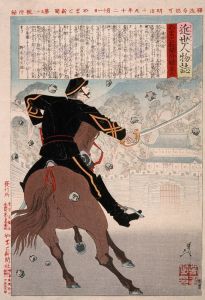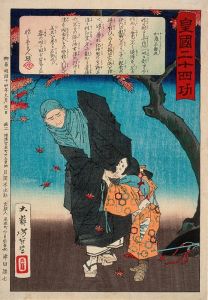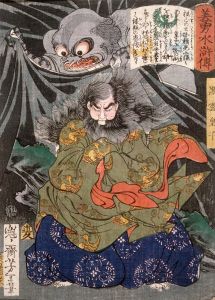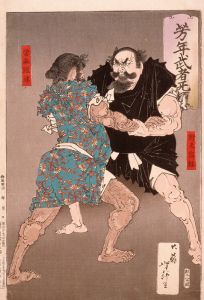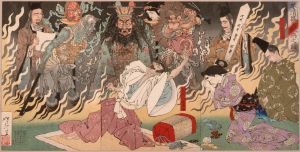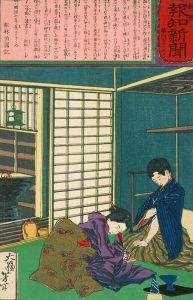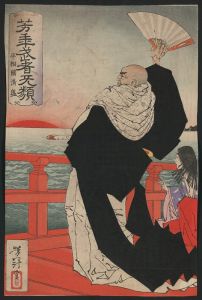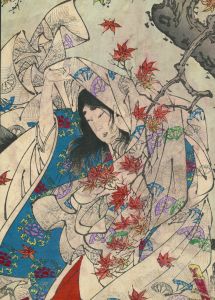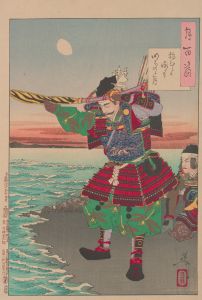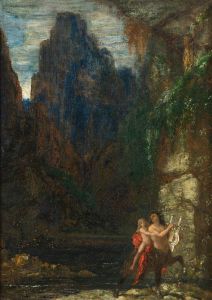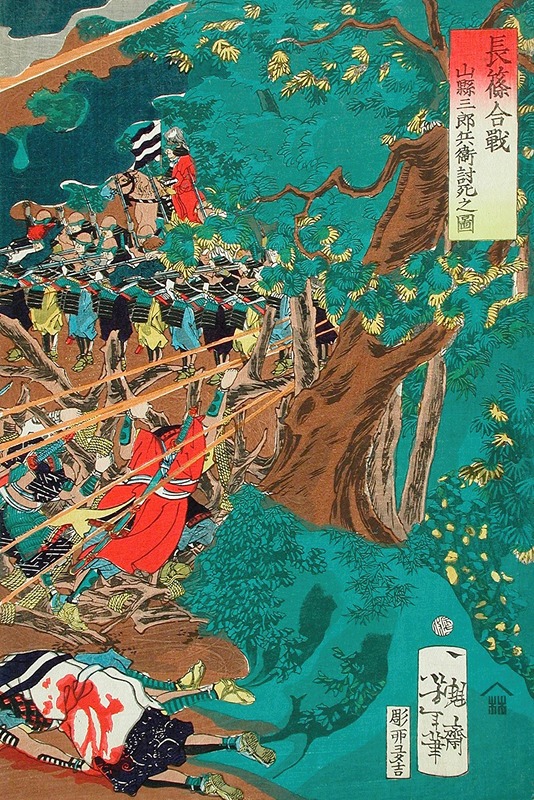
The Battle of Nagashino; View of the death of Yamagata Saburōhei Masakage
A hand-painted replica of Tsukioka Yoshitoshi’s masterpiece The Battle of Nagashino; View of the death of Yamagata Saburōhei Masakage, meticulously crafted by professional artists to capture the true essence of the original. Each piece is created with museum-quality canvas and rare mineral pigments, carefully painted by experienced artists with delicate brushstrokes and rich, layered colors to perfectly recreate the texture of the original artwork. Unlike machine-printed reproductions, this hand-painted version brings the painting to life, infused with the artist’s emotions and skill in every stroke. Whether for personal collection or home decoration, it instantly elevates the artistic atmosphere of any space.
"The Battle of Nagashino; View of the death of Yamagata Saburōhei Masakage" is a woodblock print created by the renowned Japanese artist Tsukioka Yoshitoshi (1839–1892). Yoshitoshi is widely regarded as one of the last great masters of the ukiyo-e tradition, a genre of Japanese art that flourished during the Edo period and is characterized by woodblock prints and paintings. This particular artwork is part of Yoshitoshi's series "A Chronicle of Great Peace" (Taiheiki Eiyūden), which depicts historical and legendary figures from Japan's past.
The print illustrates a dramatic moment from the Battle of Nagashino, a pivotal conflict that took place in 1575 during Japan's Sengoku period, a time of intense military and political upheaval. The battle was fought between the forces of Oda Nobunaga and Tokugawa Ieyasu, allied against the Takeda clan, led by Takeda Katsuyori. The battle is historically significant for its innovative use of firearms by the Oda-Tokugawa forces, which played a decisive role in their victory over the Takeda cavalry.
In this artwork, Yoshitoshi focuses on the death of Yamagata Masakage, a prominent general of the Takeda clan. Yamagata Masakage, also known as Yamagata Saburōhei, was one of Takeda Shingen's famed "Twenty-Four Generals" and was known for his loyalty and bravery. He fought valiantly during the Battle of Nagashino but ultimately perished along with many other Takeda warriors as their forces were overwhelmed by the superior tactics and firepower of their opponents.
Yoshitoshi's depiction of Yamagata Masakage's death is both vivid and poignant, showcasing the artist's mastery of dynamic composition and emotional expression. The print captures the chaos and violence of the battlefield, with Masakage shown in the throes of his final moments. Yoshitoshi's use of bold lines and dramatic contrasts emphasizes the intensity of the scene, while his attention to detail reflects his deep respect for historical subjects.
This artwork exemplifies Yoshitoshi's ability to blend historical narrative with artistic innovation, making it a significant piece within his body of work. It also serves as a visual representation of the cultural memory of the Sengoku period, highlighting the heroism and tragedy of figures like Yamagata Masakage.





